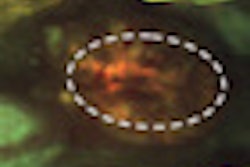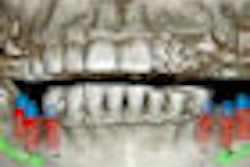Dear Imaging & CAD/CAM Insider,
Much attention is being paid of late to the need to develop more accurate ways of detecting oral and head and neck cancers at an earlier stage than is currently possible with conventional diagnostic methods.
This need has prompted researchers all over the world to investigate various optical techniques, and Raman spectroscopy has emerged as one that could dramatically improve head and neck cancer detection -- and thus its treatment too. Read more about what one research group in the U.K. is doing to make this technology available to clinicians in the near future in our latest Imaging & CAD/CAM Insider Exclusive.
In a related story, while commercial autofluorescence devices can help clinicians identify premalignant lesions in the oral cavity, the prevalence of confounding lesions increases the rate of false positives, according to a presentation at the recent Photonics West conference in San Francisco. New diagnostic devices are needed to help dental practitioners better determine whether an oral lesion should be biopsied or not.
In other technology news, a panoramic system enhanced with tomosynthesis software yielded better quality images than competing systems that did not use the same software, according to a study in Dentomaxillofacial Radiology. And atom-probe tomography -- an atomic-scale imaging tool -- recently enabled two Northwestern University researchers to begin to unravel some of the mysteries of tooth structures. Read more.
Cone-beam CT debate heats up
Meanwhile, cone-beam CT continues to spark discussion about appropriate use and radiation dose.
The November 23 New York Times article questioning the safety of dental cone-beam CT prompted Dr. Allan Farman, president of the American Academy of Oral and Maxillofacial Radiology (AAOMR), to take pen in hand and commend the Times for posing questions that are critical to the safety of dentistry's most vulnerable patients when it comes to radiation risks: children. Click here to read this DrBicuspid.com exclusive.
In related developments, health officials in Ontario, Canada, are considering easing a moratorium that prohibits any dental practitioner in the province who is not also an oral radiologist to install or operate cone-beam CT equipment. Will their efforts prompt other provinces to more closely regulate dental cone-beam CT? Read more.
And a review in Dental Clinics of North America lends further support to the need for dental practitioners to use their expertise and clinical judgment "every step of the way" when considering cone-beam CT for pre- and postimplant assessments.
In line with this, the majority of U.S. dental schools now offer training in cone-beam CT, according to research presented at the most recent AAOMR meeting. In fact, almost every dental school in the U.S. has a cone-beam CT system and has incorporated pre- and postdoctoral training on the equipment into their curriculums.
Finally, exposure to medical radiation in the U.K. is lower than in other countries, although the level of dose exposure has been creeping up over the years, according to a study released in early January by the U.K. Health Protection Agency. Read more.



















